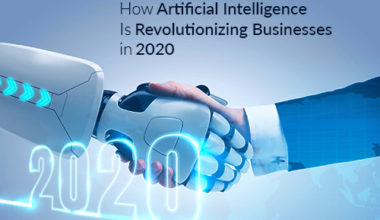AI Pushing Financial Sector to Innovate
While Fintech Startups Offer New Banking Models
Fintech, or Financial Technologies, represents many technologies that have disrupted traditional financial services. Fintech is advancing mobile payments, money transfers, loans, fundraising and asset management. Innovations in Fintech are being driven by the advancements made in AI.
Fintech investment got off to a quiet start in 2017. While Fintech deal volumes and deal value held relatively stable quarter-over-quarter at $3.2 billion invested globally, results remained below the levels seen in 2015 and early 2016, according to an analysis by KPMG.
In other points, KPMG finds:
While the US led Fintech investment in Q1’17, with $1.5 billion across VC, PE and M&A, one of the strongest elements of the global Fintech market is in the wide variety of Fintech hubs that have developed around the world.
This quarter’s top ten global deals accurately portray the diversity of the global Fintech market, with deals in the US, Canada, India, China, Sweden and the UK making the list. Even within the US, Fintechs have succeeded in growing outside of Silicon Valley, with companies based in Delaware and Ohio making the top deals list.
With the exception of a few jurisdictions, there has been exponential growth in Fintech over the past few years.
With Fintech companies and technologies now maturing in leading jurisdictions, investors appear to be looking for early investments to prove and show one’s ability to achieve scale.
Q1’17 saw a number of mature Fintech companies and Fintech investors focusing on expansion as a means to fuel growth, either geographically or through product or service expansion.
Unicorn company, SoFi, is a great example of this. During Q1’17, SoFi acquired Zenbanx gaining the ability to provide more functions of a traditional bank, including customer deposits.
Other companies mentioned included Ant Financial and Kakao Pay.
Despite the results of Q4’16, a limited number of banks have left the R3 consortium in Q1’17, including Goldman Sachs and Santander.
The consortium model continues to evolve as a way to develop blockchain. In Q1’17, a number of new consortia focused on a more limited set of use case areas were announced, including the State Bank of India’s National Bank Blockchain Consortium.
New words to Learn – from Investopedia
Insurtech – Refers to the use of technology innovations designed to squeeze out savings and efficiency from the current insurance industry model.
Insurtech is a portmanteau of “insurance” and “technology” that was inspired by the term Fintech. The belief driving insurtech companies is that the insurance industry is ripe for innovation and disruption.
Regtech – A blend word of ‘regulatory technology’ that was created to address regulatory challenges in the financial services sector through innovative technology. Regtech consists of a group of companies that use technology to help businesses comply with regulations efficiently and inexpensively.
In more highlights from the KPMG Fintech analysis:
Q1’17 saw VC-specific insurtech investment drop to $243 million across 43 deals globally as the sector experienced a pause following strong growth in 2016. This lull is not expected to last, particularly as insurance companies around the world seem to have begun to feel the pressure to embrace insurtech innovation.
Investors are showing continued interest in regtech, with strong early investment in Q1’17 following 2016’s peak. In addition to reducing compliance costs through automation, regtech solutions are increasingly supporting a broader remit, delivering capabilities to support the growth agenda.
On a technology level, AI is expected to be a key area of focus for many investors, in addition to smart data and predictive analytics. With PSD2 approaching in Europe, open banking and API offerings are also expected to gain significant attention.
Where AI is Being Applied in Fintech
AI is having a major impact on where Fintech is headed. An account in Due cites nine categories where AI is being applied in Fintech:
Credit Scoring/Direct Lending
Companies in this category use AI for credit scoring and lending applications.
2. Assistants / Personal Finance
Companies in this category rely on AI chatbots and mobile app assistant applications in order to monitor personal finances.
3. Quantitative & Asset Management
Companies in this category employ AI algorithmic trading and investment strategies or tools.
4. Insurance
Companies in this category use AI to quote and insure.
5. Market Research / Sentiment Analysis
Companies within this category use AI for research and to measure sentiment.
6. Debt Collection
Companies in this category use AI to improve creditor collection of outstanding debt through personalized and automated communication.
7. Business Finance & Expense Reporting
Companies in this category use AI to improve basic business accounting.
8. General Purpose / Predictive Analytics
Companies in this category use AI for general purpose semantic and natural language applications as well as for broadly applied predictive analytics.
9. Regulatory, Compliance, & Fraud Detection
Companies in this category use AI to detect fraudulent and abnormal financial behavior, and/or to improve general regulatory compliance matters and workflows. While this technology may sound revolutionary, it’s actually been around for years in the trading industry.
“There are two types of algorithms used in trading today,” says Juergen Schmidhuber, an AI researcher of more than 20 years, quoted in the Due account. The New York Times called Mr. Schmidhuber the father of AI in November 2016.
“There are simple programs pre-wired to do certain things that the traders have identified, for instance. Little tricks that enable it to propose a price for a certain share. Then, of course there are little [systems] that are just going through a bunch of rules. Depending on the risk profile of the client, they make certain decisions according to not very intelligent self-learning mechanisms.”
“On the other hand, you have systems that have been used since the 1990s that learn from experience to become better prediction machines,” adds Schmidhuber.
“These use neural networks to predict behavior, financial indicators and so on. The hope is you have a system that works better than those of your competitors and detects patterns that the others don’t see.”
Fintech is expanding around the world, with major investments in China, Japan and Europe. “Smarter computers, algorithms and dedicated AI systems are a Fintech dream. Faster decision-making and deeper learning (recognising, for example, predictors of financial turbulence) are obvious and huge boons to financial organisations,” writes Rich Wordsworth for Wired UK.
“The drive to eliminate human fallibility has also made artificial intelligence (AI) driven to the forefront of research and development.
It’s also expected to have a major impact in Fintech due to potential of game changing insights that can be derived from the sheer volume of data that humanity is generating,” adds Nikolai Kuznetsov for The Next Web, quoted in Due.
Speaking at a WIRED Money 2017 event, the CEO of online investment management company Nutmeg, Nick Hungerford, made some observations on where Fintech is headed: “It’s a combination of big data and artificial intelligence.
We’re going to be able to be more intelligent about people’s spending habits, their health, their lifestyles. [We’re] going to get more effective at predicting what they’re going to need for different scenarios of spending and saving.”
“AI predicts when people are likely to get married, when you are likely to have a baby, etc. So in five years, we should be really good at giving people financial advice before they even realise they need it,” says Hungerford.
Traditional financial institutions are moving to experiment with AI as well.
“AI driven workflows will be the only way for traditional banks to leapfrog the competition from new, nimble breed of banks built around innovative technology such as Blockchain and business models such as peer-to-peer payments,” says Ramesh Mahalingam, CEO and Founder at Vizru, quoted in Due.
“The emerging new shareconomy demands banks to reassess their role where products and services need to be increasingly personalized. Using real-time data can only be delivered by AI-driven digital ecosystems.
AI systems dynamically and continuously learn, reason and solve problems in real-time,” Mahalingam said. “AI driven workflows will play an instrumental role for banks in the future to deliver immersive customer experience.”
Simply put, innovations in Fintech are being driven by the advancements made in AI.
Banks Historically Resistant to Change
Banks historically have been slow to innovate, either because they are too big to quickly adapt or because they don’t know how to truly change. That has changed in the last five years, out of necessity and not a voluntary push by the banking sector, suggests Francesco Corea, Ph.D., complexity scientist, data science consultant and AI advisor, in a recent article in Hackathon.
Financial innovation is often characterized by a product innovation. Technology advances today have tightened the relationship between innovation and growth, making the drive to innovate in the financial sector today a drive to survive.
Still the financial industry is not experimenting and pushing to create new models that spread innovation risk, Corea suggests.
Better innovation models are coming forward in Fintech. AI is creating a strong pressure to innovate for the financial sector, and AI is risky.
Corea noted these AI development cycle characteristics: it requires a long time to be created, implemented and correctly deployed; it is highly technical and requires highly specialized talents; it is highly uncertain, because you need to experiment a lot before finding something that works; it is expensive, both in terms of time as well as monetary investments (talents, hardware, and data are really expensive); it is risky and the risk lies in the initial development phase, with a very high-payout but a high likelihood to fail as well.
AI is introducing a completely new speed and degree of trust in the financial industry. However AI introduces biased data and a lack of transparency, as demonstrated in some consumer applications.
AI in financial services is important not for the specific innovation or product it is introducing, “but rather because it is revolutionizing a centuries-old industry innovation flow from the ground,” Corea suggests.
AI is using structured and unstructured data in financial services to improve the customer experience and engagement, to detect outliers and anomalies, to increase revenues, reduce costs, find predictability in patterns and increase forecast reliability.
Financial services is an industry full of data. Instead of the data being concentrated in big financial institutions’ hands, most of it is actually public and thanks to the new EU payment directive PSD2 (Revised Payment Service Directive, to take effect in 2018), larger datasets are available to smaller players as well.
AI can then be easily developed and applied because the barriers to entry are lower with respect to other sectors, Corea suggests.
Moreover, many of the processes underlying financial services can be automated rather easily, while others can be improved by either brute force computation or speed.
And historically, financial services is a sector that has needed this type of innovation the most, is incredibly competitive and is always looking for some new source of ROI. Bottom line: the marginal impact of AI is greater than in other sectors.
In addition, the transfer of wealth across different generations makes the field really fertile for AI, Corea suggests. AI needs a lot of innovative data and above all feedback to improve, and millennials are happy to use AI, provide feedback and apparently be less concerned about privacy and giving away their data.
AI does face some challenges in the financial sector that limit a smooth and rapid implementation: legacy systems that do not talk to each other; data silos; poor data quality control; lack of expertise; lack of management vision; and a lack of cultural mindset to adopt this technology.
Dr. Corea credits CB Insights with offering good framework and classifications of AI Fintech startups, and he offered his personal framework for the AI Fintech landscape:
Financial Wellness: this category is about making the end-client life better and easier and it includes personalized financial services; credit scoring; automated financial advisors and planners that assist the users in making financial decisions (robo-advisor, virtual assistants, and chatbots; smart wallets that coach users differently based on their habits and needs.
Examples include [rob-advisors and conversational interfaces] Kasisto; Trim; Penny; Cleo; Acorns; Fingenius; Wealthfront; SigFig; Betterment; LearnVest; Jemstep; [credit scoring] Aire; TypeScore; CreditVidya; ZestFinance; Applied Data Finance; We cash;
Blockchain: I think that, given the importance of this instrument, it deserves a separate category regardless of the specific application is being used for (which may be payments, compliance, trading, etc.). Examples include: Euklid; Paxos; Ripple; Digital Asset;
Financial Security: this can be divided into identification (payment security and physical identification — biometrics and KYC) and detection(looking for fraudulent and abnormal financial behavior —AML and fraud detection). Examples include, respectively: EyeVerify; Bionym; FaceFirst; Onfido; and Feedzai; Kount, APEX Analytics;
Money Transfer: this category includes payments, peer-to-peer lending, and debt collection. Examples include: TrueAccord; LendUp; Kabbage; LendingClub;
Capital Markets: this is a big section, and I tend to divide it into five main subsections:
i) Trading (either algotrading or trading/exchange platforms). Examples include: Euclidean; Quantestein; Renaissance Technologies, Walnut Algorithms; EmmaAI; Aidyia; Binatix; Kimerick Technologies; Pit.ai ;Sentient Technologies; Tickermachine; Walnut Algorithm ; Clone Algo; Algoriz; Alpaca; Portfolio123; Sigopt;
ii) Do-It-Yourself Funds (either crowdsource funds or home-trading). Examples include: Sentifi; Numerai; Quantopian; Quantiacs; QuantConnect; Inovance;
iii) Markets Intelligence (information extraction or insights generation). Examples include: Indico Data Solutions; Acuity Trading; Lucena Research; Dataminr; Alphasense; Kensho Technologies; Aylien; I Know First; Alpha Modus; ArtQuant;
iv) Alternative Data (most of the alternative data applications are in capital markets rather than broader financial sector so it makes sense to put it here). Examples include: Cape Analytics; Metabiota; Eagle Alpha;
v) Risk Management (this section is more a residual subcategory because most of the time startups in this group fall within other groups as well). Examples include: Ablemarkets; Financial Network Analysis.
Dr. Corea concludes, “AI is making the industry more digitalized than ever before. Its final goal will be to create the frictionless bank of the future: no branches, no credit cards, no frauds, no menial reporting activities. A bank-as-a-platform with modular components that increases our financial literacy and has no physical products or spaces. It would definitely be a great world to live in. Can’t wait for it.”
Compiled and written by John P. Desmond, AI Trends Editor
Source: AI Trends






